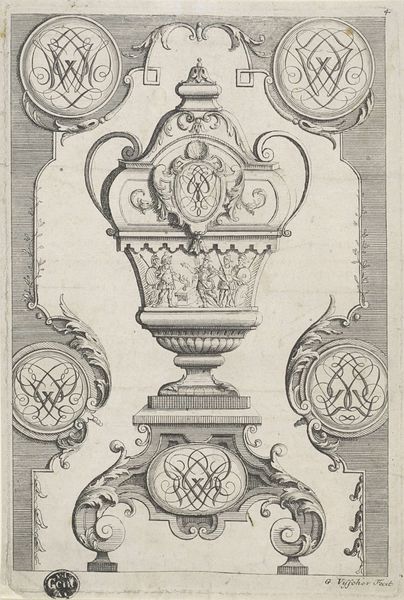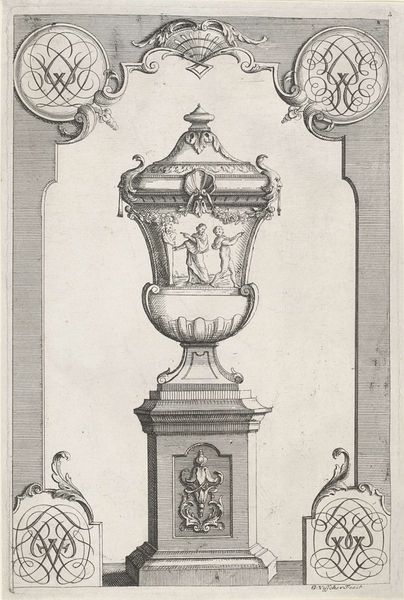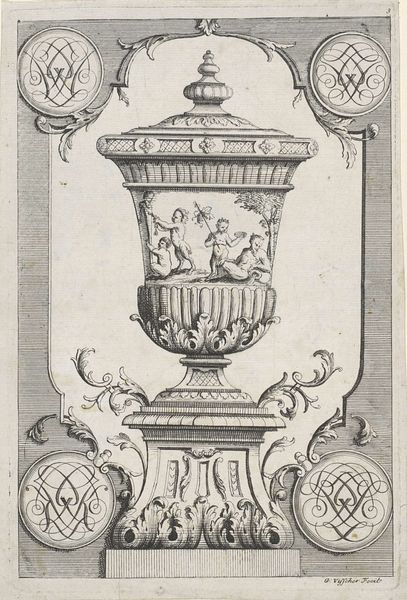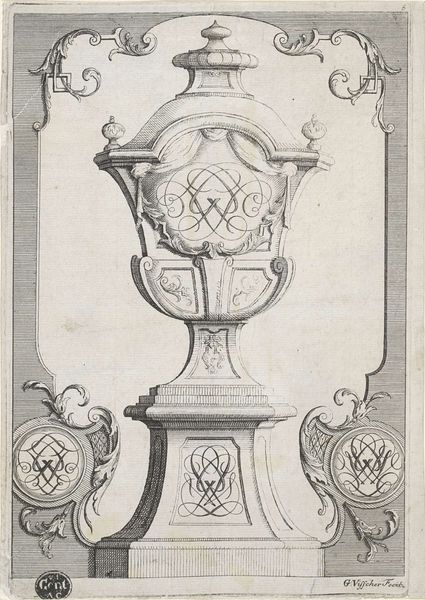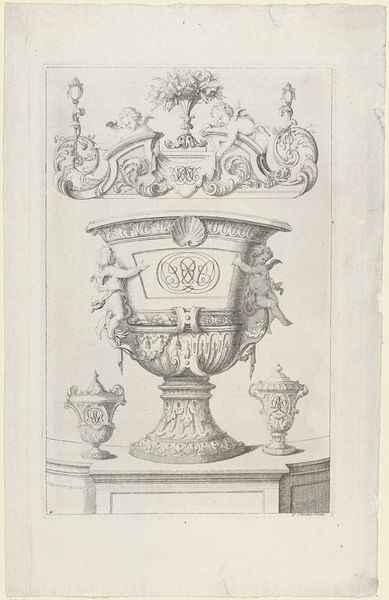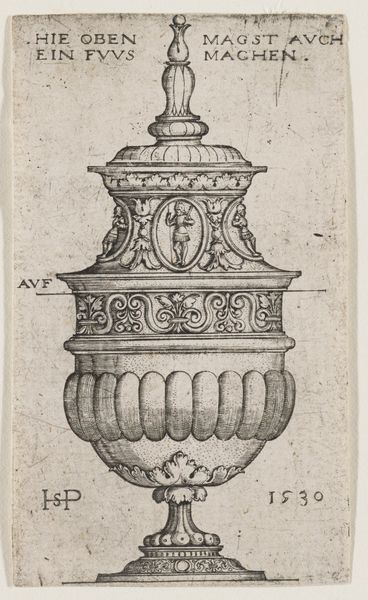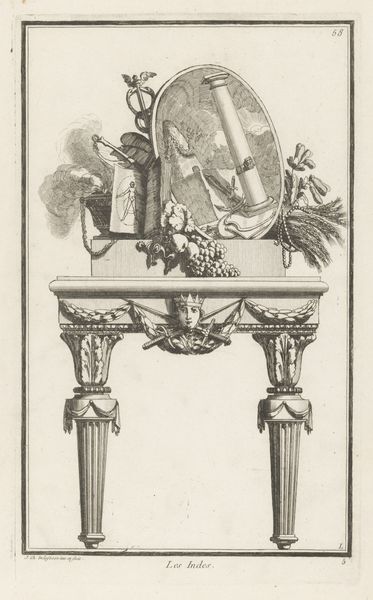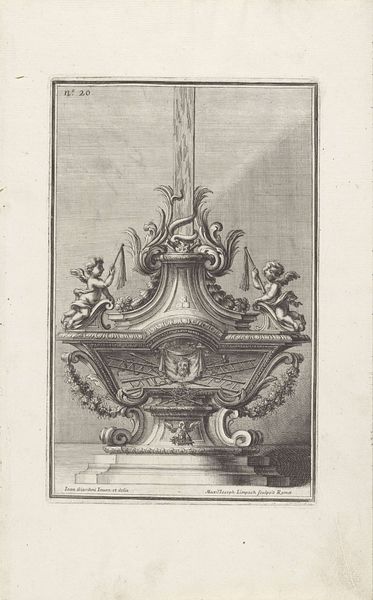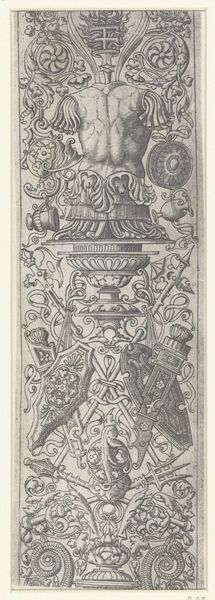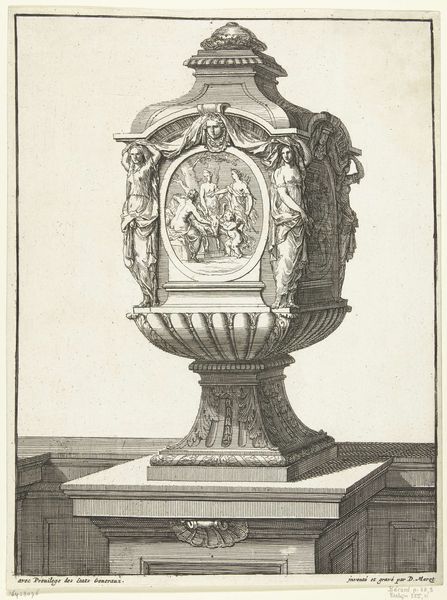
print, engraving
#
baroque
#
dutch-golden-age
# print
#
pen sketch
#
old engraving style
#
line
#
decorative-art
#
engraving
Dimensions: height 252 mm, width 165 mm
Copyright: Rijks Museum: Open Domain
Editor: This print, "Tuinvaas met monogram op het basement," was made by Gerrit Visscher between 1690 and 1710. It depicts a garden vase, rendered in engraving. What really grabs me are these interwoven letters – the monogram – appearing several times in the composition. How do you interpret these prominent symbols? Curator: The repetition is key, isn't it? The monogram acts as a visual anchor. We see it on the base, and repeated again at the top, almost like heraldic emblems. Consider how symbols functioned in the Baroque era: often serving as declarations of status, affiliations, or deeply held beliefs. The cherubs acting as lamp bearers, for example, carry that motif. What kind of status do you suppose this represents? Editor: Perhaps nobility, or wealth? I notice scenes depicted on the vase itself— could they provide clues? Curator: Precisely. See how these classical scenes link to established visual narratives, echoing ancient Greek and Roman themes. The choice to repeat this on a domestic object such as a garden vase reinforces certain ideals associated with classical virtue, artistic sensibility, even learnedness. And by extension, the owners would associate that status with themselves, no? Editor: I never thought about how the design of everyday objects would communicate identity like that. The layering of symbolism makes it much richer. Curator: Indeed, each emblem adds layers to an intentional image. How do you see your reading changing after this deeper analysis? Editor: I see how the symbolic program constructs a sort of identity. Thanks. Now when I see Baroque art, I won't just see pretty ornamentation, but active cultural communication.
Comments
No comments
Be the first to comment and join the conversation on the ultimate creative platform.
